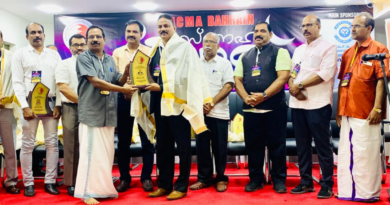You see what : The AI regulators in India now require scalpels, not hammers.
Prior to government intervention, Indians were among the most inventive people on the planet.
More than ten years ago, the libertarian pundit Gurcharan Das made the claim that “India grows at night, when the government sleeps.”
The fact that there is currently a completely preventable dispute in India around artificial intelligence regulation serves as proof that Das’s dictum holds true.
From tenacious start-ups to massive enterprises spanning the continent, India is home to a thriving ecosystem of information technology companies. A few days ago, a government recommendation caught them all off guard when it stated that corporations would want official authorization before deploying any AI models on the “Indian” internet.
Most came to the conclusion that the government was alarmed by the emergence of huge language models like OpenAI Inc.’s ChatGPT and particularly Alphabet Inc.’s Google’s new Gemini AI model. Indian officials were infuriated when Gemini’s response to the query “Is Prime Minister Narendra Modi a fascist?” went viral last week.
Despite Google’s prompt apology, the harm had already been done. The Indian government and large Internet companies, particularly those with US headquarters, are engaged in a protracted legal battle. Officials in New Delhi contend that while attempting to avoid India’s far more stringent equivalents, Google and other companies incorporate American values and regulatory concepts into their products.
The government is happy to apply the strongest sanctions available to compel international digital platforms to abide by local laws.
The government is concerned for justifiable reasons. The general election in India will take place in a few months. With 900 million potential votes, this is a massive exercise. Safeguarding elections in smaller nations might be challenging; in India, it’s an absolute nightmare.
Just last week, Modi alerted the ministers to the threat posed by deepfakes created by AI. Reducing false information in India is an enormous undertaking, and the government believes that many tech companies with headquarters in the US aren’t really trying that hard. Modi even called for universal standards for AI-driven content last year at a keynote address to the G-20 leaders.
For instance, drones were either outlawed in India until 2021 or subject to so many regulations that peer competitors had essentially an unbeatable technological edge. Furthermore, India’s fintech industry might have flourished much more if the central bank had not overreacted in the early stages and restricted mobile payments to banks that were registered in 2008.
It’s Important to consider how LLMs should be governed, when to let them out of the sandbox, and how to best protect innovation while reducing the potential for instability caused by AI-generated fakes. Bans, however, are certainly not the best course of action.
The Indian government must act if it hopes to avoid hindering innovation and making its citizens less competitive in a world economy that is changing quickly.




